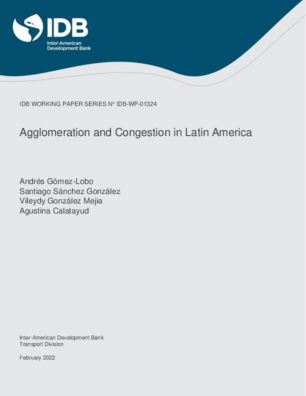Agglomeration and Congestion in Latin America
Date
Feb 2022
In this paper we explore the possible impact of urban congestion on agglomeration economies for a cross-section set of cities in Latin America. We use travel time data from Tom Tom to estimate wage regressions equations controlling for city size and congestion. We use population in each city in the 19th and early 20th century as instruments for current city size (measures by population). In our baseline estimates, we find an elasticity of wages to city size of 0.05, very similar to previous research in the region. When congestion is included in the estimation, we find that agglomeration economies are reduced. This holds even after using rain-days and average yearly as an instrument for congestion. Our results imply that congestion is a drag on economic productivity. This indirect cost of congestion is considerably larger economically than the direct cost measured as the loss of valuable time for citizens.




